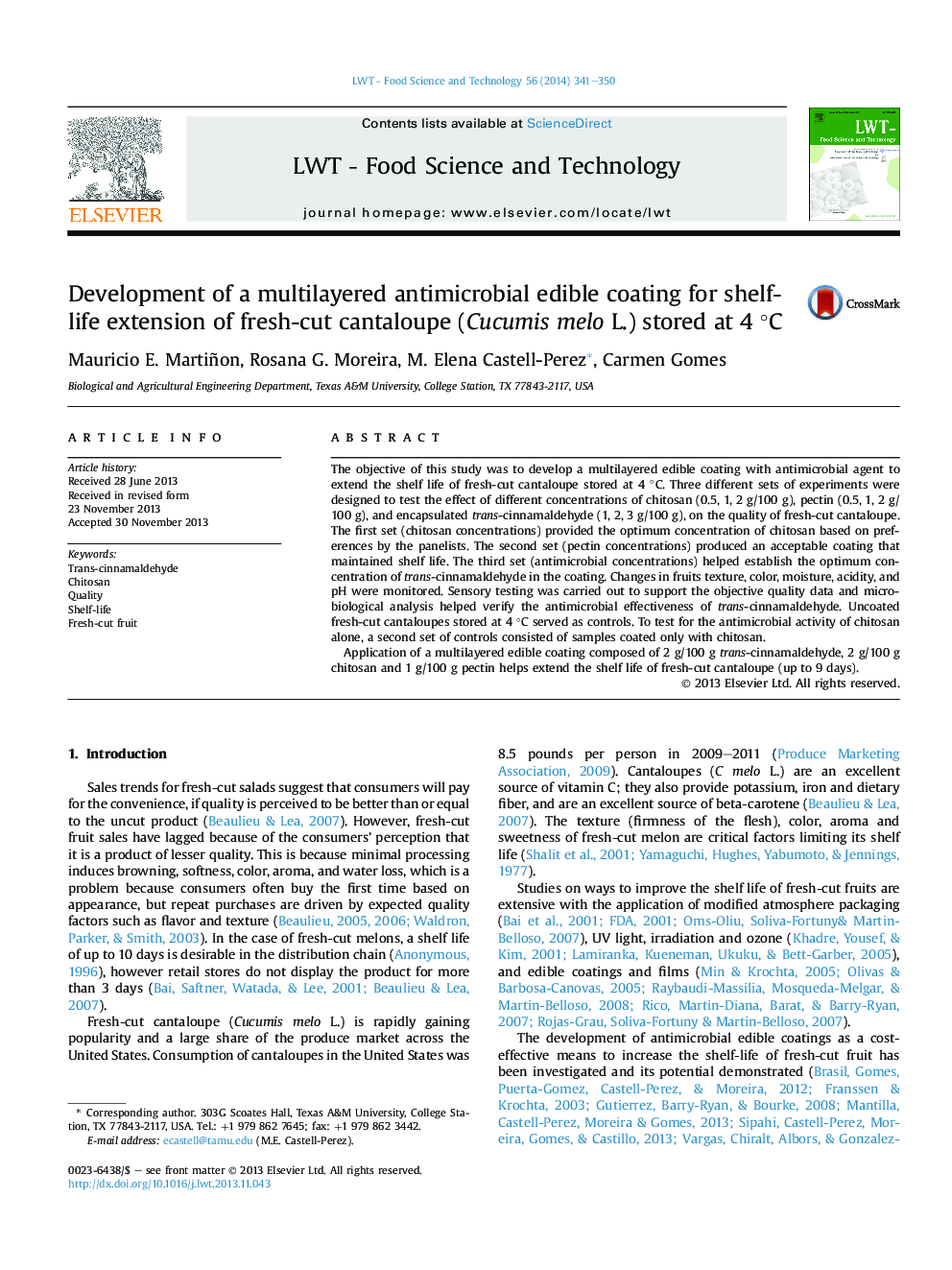| Article ID | Journal | Published Year | Pages | File Type |
|---|---|---|---|---|
| 6404301 | LWT - Food Science and Technology | 2014 | 10 Pages |
â¢Coated fruits lasted longer (7-9 days) compared to uncoated controls (4 days) at 4 °C.â¢Coating is an effective carrier of the antimicrobial compound.â¢The most effective multilayered antimicrobial edible coating required a thinner layer of pectin.
The objective of this study was to develop a multilayered edible coating with antimicrobial agent to extend the shelf life of fresh-cut cantaloupe stored at 4 °C. Three different sets of experiments were designed to test the effect of different concentrations of chitosan (0.5, 1, 2 g/100 g), pectin (0.5, 1, 2 g/100 g), and encapsulated trans-cinnamaldehyde (1, 2, 3 g/100 g), on the quality of fresh-cut cantaloupe. The first set (chitosan concentrations) provided the optimum concentration of chitosan based on preferences by the panelists. The second set (pectin concentrations) produced an acceptable coating that maintained shelf life. The third set (antimicrobial concentrations) helped establish the optimum concentration of trans-cinnamaldehyde in the coating. Changes in fruits texture, color, moisture, acidity, and pH were monitored. Sensory testing was carried out to support the objective quality data and microbiological analysis helped verify the antimicrobial effectiveness of trans-cinnamaldehyde. Uncoated fresh-cut cantaloupes stored at 4 °C served as controls. To test for the antimicrobial activity of chitosan alone, a second set of controls consisted of samples coated only with chitosan.Application of a multilayered edible coating composed of 2 g/100 g trans-cinnamaldehyde, 2 g/100 g chitosan and 1 g/100 g pectin helps extend the shelf life of fresh-cut cantaloupe (up to 9 days).
